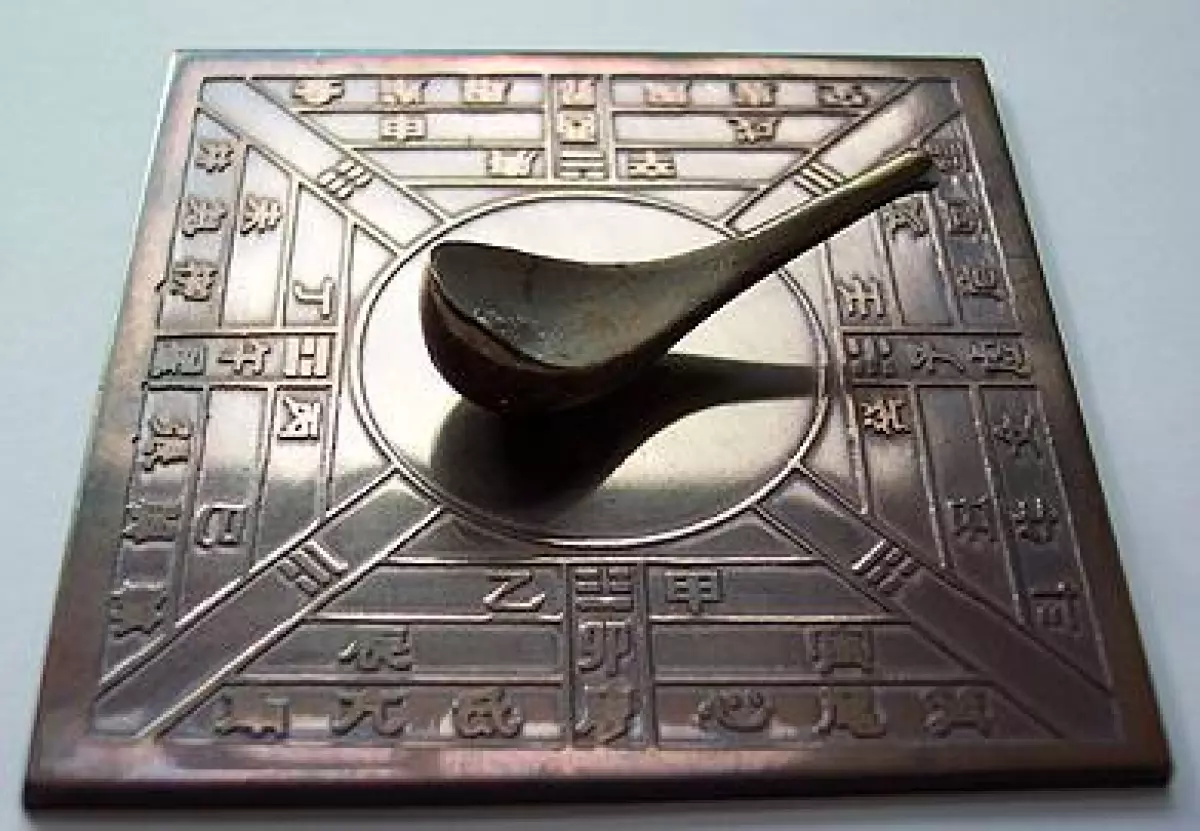 Image: Ancient Chinese compass
Image: Ancient Chinese compass
In the world of feng shui , finding balance and harmony is a timeless pursuit. This ancient practice encompasses both the study of landscape and the mathematical aspects that order space and time. At the core of this practice lies the compass – a tool that unlocks the secrets of direction and terrestrial magnetism.
It is believed that the compass was invented by the Chinese, much like feng shui itself. Legend has it that Emperor Huang-ti harnessed the power of the compass to guide his troops in a battle shrouded in fog around 2634 BC. The rediscovery of the compass in the West marked a significant leap forward for humanity's epic journeys.
Using a compass may seem straightforward, but reliable measurements require careful consideration. For instance, when measuring the front of a building, it's important to take multiple readings to ensure accuracy. Simply noting down compass readings from the balcony without additional measurements can lead to misinformation.
Many people eager to explore feng shui, particularly popular systems like Ba Zhai or Xuan Kong, want to quickly construct their geomantic chart. This article aims to provide a basic understanding of the measurement process, covering common types of compasses, recommended measurement steps, and data registration in an orientation table.
1. Common Types of Compass
a) Compass with a Magnetic Needle
The first type of compass is equipped with a magnetic needle that typically comes in two colors. In the West, red indicates north, while black signifies south (magnetic poles). These compasses also feature a rotating ring that allows for a reference of degrees. The traditional Chinese compass, known as the Luo Pan, is one example of this system.
b) Compass with a Magnetic Disk
The second type of compass replaces the needle with a rotating magnetic disk containing degrees. This design eliminates the need for subsequent adjustments to the needle in reference to an outer ring, providing added convenience. This type of compass is commonly found in situations where manual adjustment is impractical, such as aircraft, ships, and cars.
c) The Luo Pan: Traditional Feng Shui Compass
The Luo Pan, or Lo'pan, utilizes a moving needle and an external plate filled with information. This compass often features two strings that divide the plate into four sections, offering precise readings of the front, seat, and lateral positions—representing the four animal protectors of feng shui. Different types of Luo Pan exist, tailored to various feng shui branches and master preferences.
 Image: Luo Pan
Image: Luo Pan
In addition to analog compasses, digital compasses are available today for quick readings. However, when venturing into remote and inhospitable places, the classic compass proves advantageous as it always provides reliable readings without relying on power sources.
2. Which Compass Should I Acquire?
Selecting a compass that guarantees accurate readings requires some considerations. If you opt for a Luo Pan, ensure the alignment of the strings that divide the plate is exact by checking their parallelism in each section (north-south or 0-180 degrees, as well as east-west or 90-270 degrees). Additionally, ensure the plate rotates smoothly, and the internal needle is of high quality. For Western compasses, choose a brand known for quality and clear degree readings.
Investing in a quality compass is worthwhile. Its accuracy and proper usage can make all the difference between a correct or incorrect feng shui chart.
3. The Basic Theory of Cardinal Directions
A standard compass is divided into 360 degrees. To understand the degrees occupied by the four basic directions (north, south, east, and west), simply divide 360 degrees into four equal parts. Each part represents a 90-degree section. Using a more precise scale, such as dividing 360 degrees by eight (45 degrees per subdirection), provides more accurate measurements.
4. Facing and Seating of a Construction
When analyzing a building's feng shui, the most important zone to consider is the main facing. In feng shui, the facing represents the area through which energy, known as Qi, enters a space. While the front door is often associated with the main facing, it is important to note that this is not always the case, especially in modern, urban settings. The main facing is typically found in the most significant windows of a living room, balconies with expansive views, or areas with the best vistas.
The seating, on the other hand, represents the opposite side of the facing. It marks the more Yin part of the house and distinguishes different types of housing in some feng shui systems.
5. Process of Reading
To take accurate readings, position yourself correctly. Let's imagine the front of the house you're studying faces the sea – a space associated with expansive views, large windows, and movement. In this case, align your back parallel to the front and face towards the sea.
Refer to the photographic composition above to visualize your physical position when taking the reading. Adjust your compass or Luo Pan to accurately read the information of the facing.
Remember to take precautions to ensure reliable readings. Avoid taking measurements indoors as they can be easily influenced by magnetic disturbances, such as nearby metal elements or structural features like beams, pipes, and wires, along with electromagnetic pollution. It's best to go outside and take multiple readings along the facade, comparing the front and seat readings to ensure proper alignment.
6. Precautions for Readings
One common mistake when using a compass is to rely solely on indoor readings, which can be completely incorrect. Magnetic disturbances in the modern world can easily disrupt accurate measurements. Therefore, it's crucial to exercise caution and take measurements outside, away from metal decorations, cars, lampposts, or any elements that could affect the compass. Avoid placing the compass on the ground, as underground elements can also interfere with its reliability.
7. Help to Calculate Stars Letter
For long-distance consultations, it is essential to ensure that the reading process has been thorough and accurate. Erroneous values can lead to incorrect conclusions. After completing the reading, the next step is to prepare the geomantic chart. You can utilize the free software Feng Shui Numerology 3.16 to perform calculations and analyze a Xuan Kong Fei Xing chart.
The software displays each of the 24 mountains and their relationship to each magnetic section of the compass, as well as the house's trigram, time, mountain and water stars, and visitor stars of the year, month, and period. It also highlights special cases found in different Xuan Kong charts.
Finally, the software allows you to save and restore information, and even create and maintain your own visual styles.
By understanding the power of the feng shui compass, you can unlock the secrets of your environment and create harmony and balance within your space. Remember to approach feng shui with an open mind and consult experts to fully tap into its potential.














